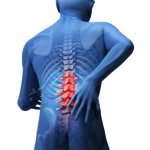Back Pain Relief Medicine
Most people with back pain have tried some form of back pain relief medicine. They usually fall into one of 2 groups – anti-inflammatory or pure pain killers. Both of these types of medication provide quick relief however they often do not address the main source of the injury that leads to back pain.
It is a trap to rely on these types of drugs to alleviate your back pain. They are meant to be used as short term relief for acute pain, not long term solutions to chronic back pain.
Here is some interesting information on medication that is often used for back pain sufferers.
Back Pain Relief Medicine
When a patient is in pain, doctors seek to provide relief. But sometimes that relief causes more problems than it solves.
Side effects, tolerance and withdrawal symptoms can compromise the drugs’ pain-relieving effects. In a 2009 study of 1,843 workers with back injuries, researchers found that only 26 percent of the patients on opioid painkillers experienced pain relief, and only 16 percent experienced improvement in physical function.
This is not to say that people should not be treated for their debilitating emotional and physical pain. Opiate painkillers can be highly effective for managing pain and studies by the American Pain Society and National Institute on Drug Abuse suggest that the majority of patients can take these medications without developing an addiction. But veterans (as well as other high-risk populations, such as chronic pain patients with a personal or family history of addiction or a co-occurring mental health disorder) need specialized care that goes beyond opiate-based drug therapy.
Alternatives for Pain Management
Unfortunately, many doctors are unprepared to help patients in pain. Surveys by the National Center on Addiction and Substance Abuse at Columbia University suggest that only 40 percent of doctors received training to identify drug abuse and addiction, and less than half received instruction in pain management. And though there are efforts underway to prevent excessive prescribing of narcotic painkillers, including additional training for medical professionals, further research about chronic pain and addiction, and enhanced tracking and record-keeping to prevent doctor-shopping, it has yet to be determined how effective any of these measures will be.
In the meantime, doctors working with patients in extreme emotional and physical pain must strike the ideal balance with treatments that will reduce pain without doing additional damage. Here are a few of the alternatives that should be considered before an opiate-based pain management regimen is put in place:
Non-Addictive Painkillers
Many types of pain respond to non-opioid pain relievers, such as anti-epileptic drugs, antidepressants and anti-arrhythmic drugs, and anti-inflammatory drugs, such as aspirin, ibuprofen and acetaminophen. While all drugs carry some risk, when used as directed these medications can deliver pain relief without putting the patient at risk for addiction or serious side effects.
Here are 3 great alternatives to using drugs for getting rid of pain. There are many options apart from medicine, but we have included 3 that most would be familiar with and that provide the quickest back pain relief.
Acupuncture
Pain relief is among the most popular uses of acupuncture. By correcting imbalances in the body and releasing endorphins and other pain-blocking neurotransmitters, acupuncture has been used as a complementary treatment for various pain conditions.
Massage
Stress, depression, anxiety and other issues can increase the body’s sensitivity to pain. Massage therapy, along with other stress management techniques, such as meditation, guided imagery, progressive muscle relaxation and deep breathing exercises, can help ease tension and reduce pain. Massage has proven particularly effective in treating back and neck pain.
Diet & Exercise
A well-balanced diet can aid in digestion, reduce the risk of certain diseases and help the body function optimally. Exercise releases natural mood-boosters like endorphins and strengthens the muscles, which can help to prevent injury and pain. Yoga may be particularly effective in reducing tension and connecting mind, body and spirit. All diets and types of exercise are not right for everyone, which is why a health care provider should be involved in establishing each patient’s diet and fitness routine.
So you can see that there ARE good options for helping fix your back pain apart from back pain relief medicine. Often exercise is suggested as the best long term relief solution for most types of lower back pain. If you are disciplined and stick to your prescribed exercise regimen as prescribed by your physiotherapist or health specialist, it is a much better way of moving towards healing as opposed to a quick fix band aid solution that is often the way of pain killing drugs.
To get some more great tips and techniques for lower back pain relief – be sure to sign up for the free back pain cure back on the right hand side of this page. There are a heap of fantastic tips to help you alleviate back pain at home.
You might also like:
Tags: Back Pain Relief Medicine, pain relief















